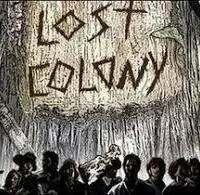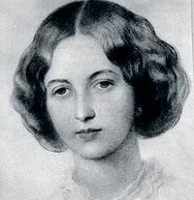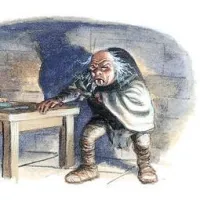Edith Nesbit, best known as the author of The Railway Children, The Phoenix and the Carpet, The Treasure Seekers and many other children’s classics, was also the mistress of the ghost story and tales of terror. She was able to create genuinely chilling narratives in which the returning dead featured strongly. Her flesh-creeping yarns included love that transcended the grave, reanimated corpses, vampiric vines, vengeful ghosts and a whole host of other dark delights. However, Nesbit’s vintage spooky stories, tinged with horror, are all told in a bold, forthright manner that makes them seem fresh and unsettling even when read now. There was even something striking and otherworldly about Nesbit’s appearance, for she was described by those who saw her as having ‘a long full throat and dark luxuriant hair’. For some unfathomable reason, although Nesbit is still a well-known author today, her contribution to the ghost story genre is virtually unknown and unremarked upon, for the most part neglected by publishers and out of print for years. While there is no clear explanation for this, given the unquestionable quality of her supernatural fiction, one possibility is that Nesbit has simply been pigeon-holed conveniently as a children’s author. As a consequence, her writings in other areas have perhaps by default been disregarded – a fate that, in my opinion at least, is undeserved.
 As a person, Nesbit often appeared to be a mass of contradictions. Despite her delicate, Pre-Raphaelite appearance, she smoked like a chimney and was in many other ways amazingly unconventional for a woman of her times (she lived between 1858 and 1924). She was barely out of her twenties when she married and her relationship with her husband, Hubert Bland, was a stormy one. Bland was a noted philanderer and fathered a child with one of Nesbit’s best friends – a child whom she eventually adopted as her own. Consequently, Nesbit suffered mental turmoil in trying to cope with the tensions and frustrations of her marriage, writing furiously all the while in order to earn enough money to run the household. It is perhaps no wonder that, given the very nature of her somewhat stressful and surreal domestic circumstances – sharing both her husband and his children with another woman while remaining on very friendly terms with them both – she should turn to fantasy and the supernatural for her subject matter. Almost inevitably, an element of Nesbit’s mental turmoil seeped into her horror tales, which in places reveal the strong undercurrents of anxiety and emotional pain she must have felt at the time.
As a person, Nesbit often appeared to be a mass of contradictions. Despite her delicate, Pre-Raphaelite appearance, she smoked like a chimney and was in many other ways amazingly unconventional for a woman of her times (she lived between 1858 and 1924). She was barely out of her twenties when she married and her relationship with her husband, Hubert Bland, was a stormy one. Bland was a noted philanderer and fathered a child with one of Nesbit’s best friends – a child whom she eventually adopted as her own. Consequently, Nesbit suffered mental turmoil in trying to cope with the tensions and frustrations of her marriage, writing furiously all the while in order to earn enough money to run the household. It is perhaps no wonder that, given the very nature of her somewhat stressful and surreal domestic circumstances – sharing both her husband and his children with another woman while remaining on very friendly terms with them both – she should turn to fantasy and the supernatural for her subject matter. Almost inevitably, an element of Nesbit’s mental turmoil seeped into her horror tales, which in places reveal the strong undercurrents of anxiety and emotional pain she must have felt at the time.
Many of Nesbit’s ghost stories demonstrate a strong psychological bent, albeit in a rather basic and unsophisticated sense. Her most successful narratives use the supernatural as a catalyst to precipitate an emotional crisis. The stories explore internal conflicts just as much as they rely on the special effects of the supernatural. Unrequited or unfulfilled love forms the basis for many of the stories, revealing, perhaps, the deep disappointment and hurt she felt concerning her husband and his philandering ways. Stylistically she was ahead of her time, for her tales are fierce, engaging and told in a modern fashion that demands attention, so different from the genteel ghost stories written by many of her contemporaries. One interesting aspect of these exercises in terror – and in a sense one that is typical of the woman and her background and beliefs – is her ability to touch upon the deeper currents of eroticism and moral ambiguity involving her characters. Nesbit also had a personal fascination with the supernatural. Her interest and involvement in matters of the paranormal began very early in life. She claimed to have lived in two haunted houses and two particular phobias which she developed in childhood – the dead returning to life and the fear of being buried alive – are recurring themes in her work.
Man-Size in Marble (click to read!) is probably the best known and most anthologised of Nesbit’s stories. It epitomises why she was so successful at the demanding art of telling a ghost story, while at the same time revealing why she was so different from her contemporaries. The story is unremittingly savage, the prose is sharp and unfettered by overblown circumlocution, while the ending is cruel and unhappy. There is an awful inevitability about the climax that readers may sense early on but are still held by a strange fascination to see where the narrative takes them. Nesbit never shirks from leaving the reader shocked, dismayed or abandoned. Life is cruel, she seems to be saying; you have no right to expect a happy ending. She might well have been applying that ideology to her own situation, however, in life if not in fiction things did not in the end turn out too badly for Nesbit. Following the death of Bland in 1914 she finally settled down into a fairly contented marriage with an old friend and fellow socialist, Thomas Tucker, with whom she lived happily to the end of her days.















Another great piece, Anil. I was unaware that Ms Nesbit wrote ghost stories. I very much enjoyed Man-size in marble.
Yes, it’s a little-known treasure!
Having just recently acquired this I was pleased to find your review. It’s true that her childhood furnished experiences and attitudes that contributed to her fascination with the supernatural (see my review of her autobiography at http://wp.me/s2oNj1-longago) but I admit that until now I was only concerned with how it influenced her writing for children. I’m looking forward to reading ‘Tales of Terror’ now, but perhaps not for nighttime relaxation!
Reblogged this on Haint-Blue Shudders.
Look forward to reading this!